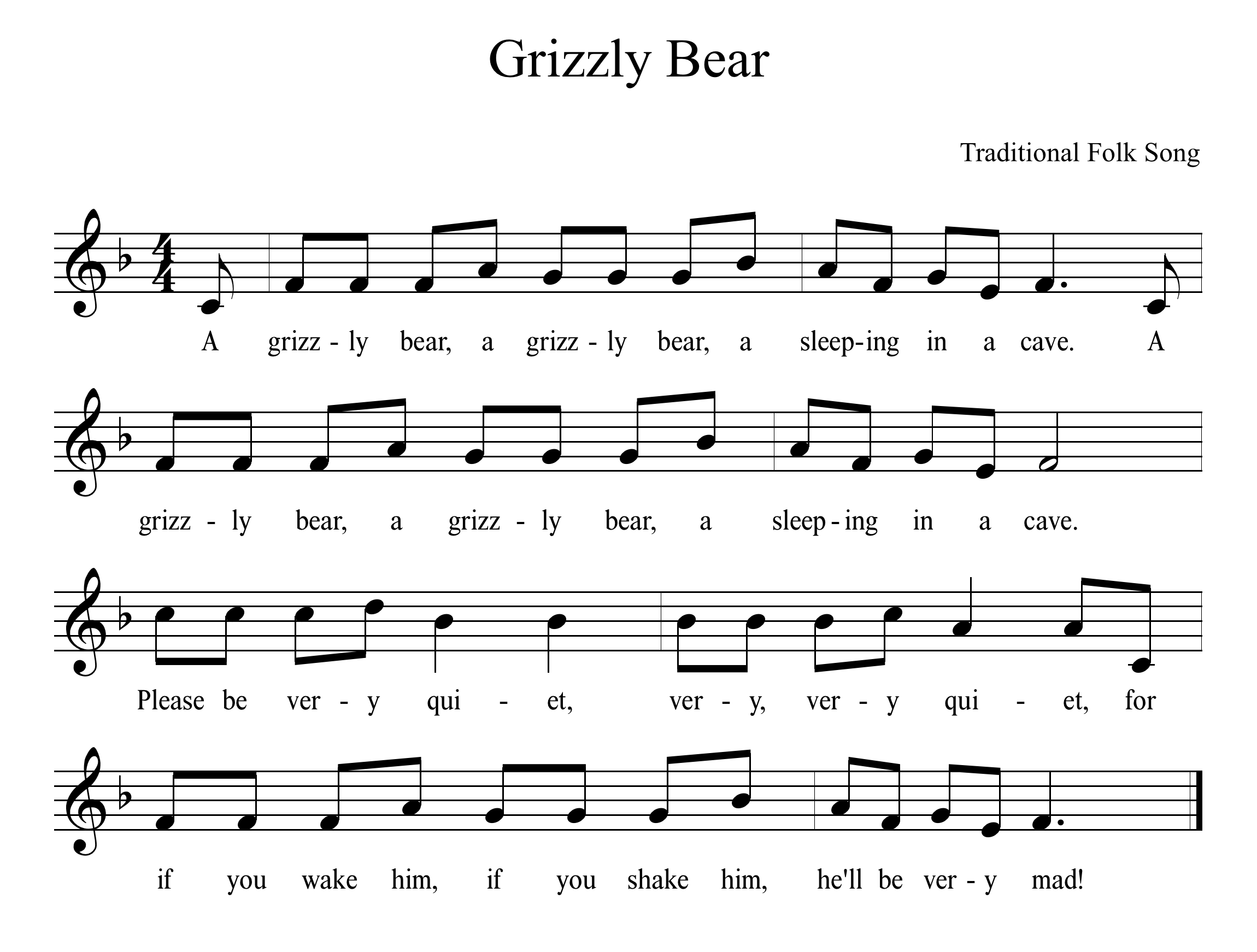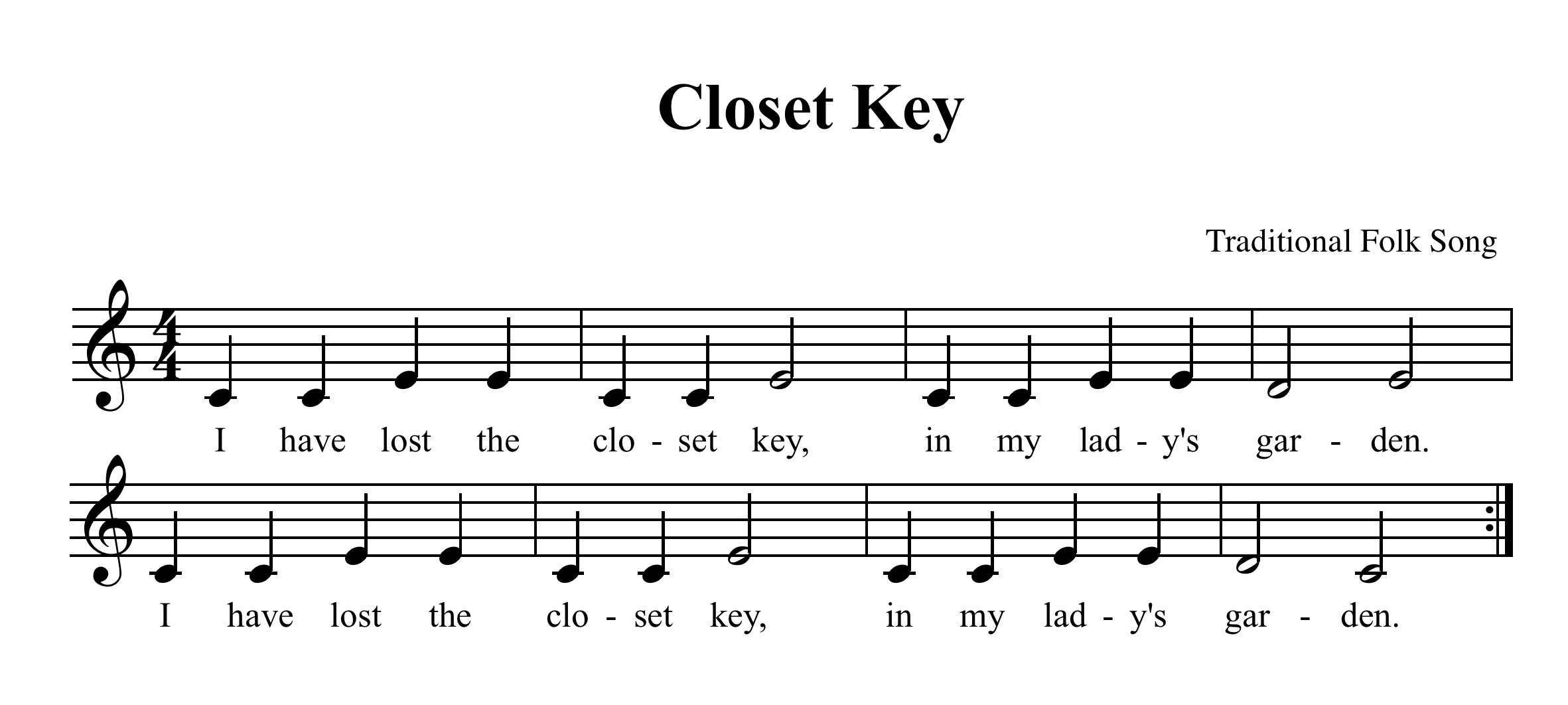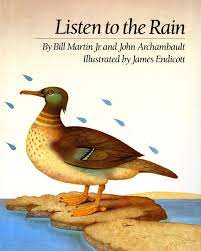
Grizzly Bear
Grizzly Bear is a classroom favorite with my K-1 students. They love the game, but I love how they get to experience crescendo – gradually getting louder – through a simple song.
Teaching Process
As with all activities, I always begin by teaching the song to my students. I use Rote Song Procedure with my students to teach the song. Rote Song Procedure is a technique used by Music Learning Theory practitioners to help students not only learn a song, but to also learn about the tonality and meter of a song as well. Our first class is simply focused on learning the song. The second class, I check for understanding to ensure the students learned the melody, then we begin our Dynamic work. I begin by singing the song softly, gradually getting louder to the end. We discuss the word Dynamics and define it as “how loud or soft the music is performed.” Then we begin playing with the idea that our idea of loud/soft can be expanded. I sing it again starting softer and ending louder than before. We talk about how when music gradually gets louder, it’s called “crescendo.”
Game Directions:
The third class, I introduce the game to my students. We choose one person to be the bear. That person pretends to sleep at one end of the room. The rest of the class lines up on the other side of the room. As we sing the song, the students tiptoe to the microbeat towards the bear. As we get closer, we get louder and louder. On the word “mad,” the bear awakens and chases the students back across the room. If a student is tagged, that student is out for one turn. A new bear is selected and we play the game again.
This is a great game to take outside on a sunny day! Our fourth class, we may continue to play the game if additional turns are needed, but our main focus is introducing the Italian terms for Dynamics. We practice saying the terms “pianissimo, piano, mezzo piano, mezzo forte, forte, and fortissimo,” and connecting them to their meanings. We usually follow up this activity with the Listen to the Rain activity listed below, so that students have additional opportunities to practice and deepen their understanding of Dynamics.
Closet Key
Closet Key is another fun game song for students. We play this game in second grade.
Teaching Process
Again, we begin by learning the song using Rote Song Procedure. Once students can sing the song independent of me, we begin discussing Dynamics. We revisit our definition of Dynamics and the Italian terms that we’ve learned in class. I share with students that we are going to learn a new word: decrescendo. Decrescendo means the opposite of crescendo – to gradually get softer! I show the symbols for crescendo and decrescendo on our interactive white board and tell my students that if I point to one of the symbols, I want them to sing the song using the Dynamic marking. We begin the song and I point to crescendo, indicating that students should gradually get louder. Then I point to decrescendo, indicating they should gradually get softer. We practice several times with students coming to the board to “conduct” our Dynamics.
Game Directions
The next class, I teach the game to my students. The game is much like “Hot & Cold.” To play, one student sits in the middle of the room. The rest of the class sits in a circle around the student. I show the kids a simple key. The key will be hidden in the room but it has to be in plain sight. It may not be hidden behind nor underneath anything. The student in the middle hides their eyes, and the key is hidden.
Once the key is hidden, we ask the student in the middle to stand up. Instead saying “hotter” or “colder” to give clues to the location of the key, students simply use Dynamics to give clues. If a student is getting closer to the key, they gradually get louder. If a student is moving away from the key, students gradually get softer. We give the student 4 repetitions to find the key before telling them where the key is. Our final class, we review terminology again, give additional turns if necessary, and begin to apply crescendo/decrescendo to our performance of other songs.
Listen to the Rain
This is such a lovely book for students. It’s one of my favorites by far! It has rich language that is describes rain through Dynamics – sprinkle rain, steady rain, and thunderstorm rain! We begin by reading the story in class. We identify the different types of rain, then connect them to the terms we use to describe Dynamics. Sprinkle rain becomes piano, steady rain becomes mezzo piano (or mezzo forte), and the thunderstorm becomes forte. Then we get the wood mallets and dry erase boards out. We practice tapping on the boards as softly as possible – creating sprinkle rain. We practice tapping the boards so that we create steady rain. Then we let loose and tap the boards as loudly as possible to create thunderstorm rain.
I really wanted a way to get students to practice gradually moving from one Dynamic level to the next, so I created some charts for additional practice. You can find them here. Once students can perform the rain at each Dynamic level, then read the story again with your students performing the rain on their boards. It’s such a magical activity and a powerful way for students to experience the range of Dynamics!
What are your favorite songs or activities to teach Dynamics? Drop me a line below!








Thanks for these great ideas. I am teaching out of area and love great practical ideas to help my music classes
I do the same thing you do for closet key with the song Lucy Locket. Great ideas!
I love the grizzly bear song, thank you for sharing it! Just discovered your blog and I am excited to start following it!
Thanks so much Allie! I’m so glad you’re getting some ideas from my blog! Thanks so much!
thanks for the information
You’re welcome!
thank you so much! First time teaching k and 1st grade. This is a life saver.